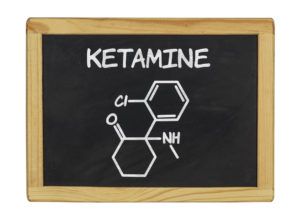About Ketamine Infusions
How Ketamine Infusions Work

Ketamine infusions inhibit the N-methyl D-aspartate (NMDA) receptor in our central nervous system. This receptor is activated by a neurotransmitter called glutamate. Glutamate is found at excessive levels
Ketamine also serves as a dissociative anesthetic in the operating room and as a powerful pain reliever in emergency rooms, burn centers for dressing changes, and more. It is a very safe medication used in the proper
Ketamine Infusions for Mood Disorders
Every year, 13 million to 14 million Americans have major depression. Of those who seek treatment, 30% to 40% will not get better or fully recover with standard antidepressants. That puts them at greater risk of alcohol and drug abuse, hospitalization, and suicide attempts. Now, though, a growing body of research shows there may be new hope: the anesthetic drug ketamine. 10-30% of those with severe depression fail multiple trials of medications. The remaining 30 % are stuck. They may try
Perhaps more distressing are those people with suicidal thoughts who also have not found help from typical medication and therapies. Ketamine has a profound and rapid impact. A patient may have relief of symptoms as early as the first infusion. Often, it is a bit more gradual over ensuing infusions, with the initial round of 6 infusions completed within 2 weeks. This is in stark contrast to oral medications that may sometimes take several weeks to have an effect. A person with suicidal thought does not have this time to wait.
Ketamine Infusions for Chronic Pain
Ketamine Infusions for chronic pain is peaking scientist, physician and patient interests. The inhibition of the NMDA receptors also helps mediate chronic pain. Specifically, neuropathic pain conditions also result in an increased release of glutamate. Ketamine has long been used in the operating room and emergency rooms for acute pain control. Now, emerging evidence shows it may help chronic pain sufferers.
Guidelines are under preparation from societies such as The American Society of Regional Anesthesia and Pain Medicine. While continued clinical studies are needed to optimize protocols, certain methods of delivery have shown better outcomes. Some patients are helped tremendously, and even receive some reimbursement from their insurance companies.
At
%
